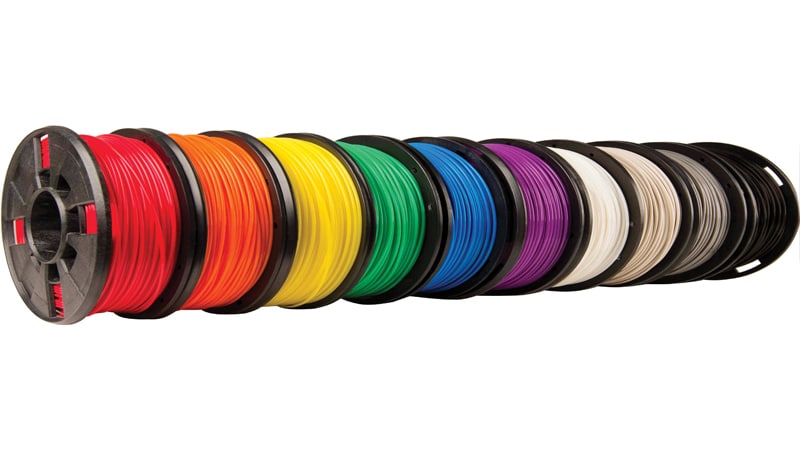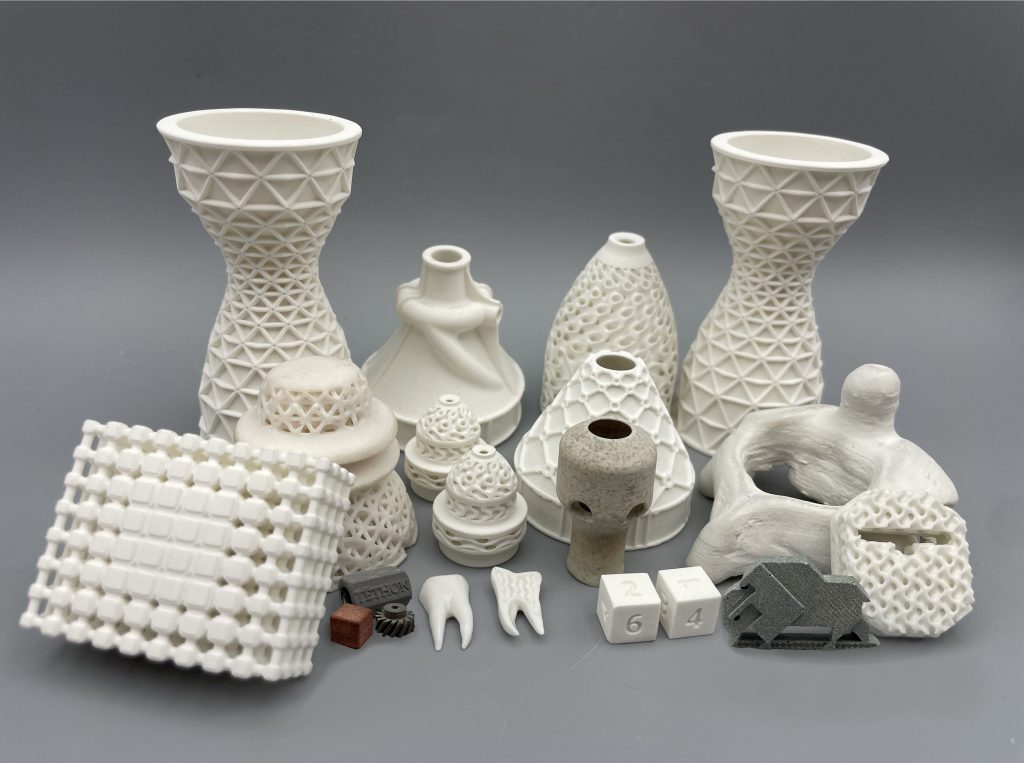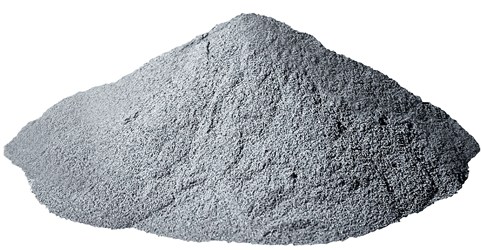3D printing uses different types of processes to manufacture parts and prototypes for wide range of applications. This process is quick and cost effective. In order to produce parts with different mechanical properties and usage, we need different kind of 3D printed materials.
This article will help you to choose right material for process and functionality of parts.
The majority of 3D printing materials can be classified into two groups mainly polymers and metals.
Polymers:
Polymers generally classified as thermoplastics and thermosets.
Thermoplastics can be melted and solidified over and over again without losing their properties
Thermosets are liquid resins which are cured by heat or light. Thermosets don not melt and hence reusing is not possible.

ABS:
Acrylonitrile butadiene styrene (ABS) is one of the most popular 3D printing materials to date. Easier way to remember this material is think of Lego bricks. All the Lego bricks are made of ABS and it is also very commomn injection molding material.
- Working temperature 230oC-260oC
- Good mechanical properties
- Good temperature resistance
- Prone to wrapping (heated platform and enclosed chamber required)
- Required ventilation to remove smelly and toxic chemicals
Application:
- DIY projects and Toys
- Electrical enclosures
- Conceptual models
- Phone cases
- Hobbyist 3D printing
- Educational purpose
Common Brands:
- eSun
- Stratasys
- Ultimaker
Cost:
It is strong, light weight and affordable material. Cost ranges from 10$- 30$ per Kg.
PLA:
Polylactic acid is a polymer which is biodegradable under certain conditions. It is the most common filament choice for beginner’s because it is easier to print.
- Low printing temperature from 190oC – 230oC
- Tough but not heat resistance as ABS
- No need the heat the printer bed
- Slight smell when heated but no toxic fumes
- Brittle and less durable than ABS
- Biodegradable
Application:
- Concept models
- Look like prototypes
- Painted Miniatures
Common Brands:
- Ultimaker
- Polymaker
- Innofil
- FormFutura
- ColorFabb
Cost:
It is less durable then ABS but having some other good benefits. Cost ranges from 10$- 30$ per Kg
PETG:
PETG is derived from PET (Polyethylene Terephthalate)by adding some Ethelene Glycol. As a result, PETG is more clearer, less brittle and easier to use than PET.
- produces smooth surface and lower shrinkage
- Some varieties are food safe
- Humidity and chemical resistant
- Printing temperature from 230oC – 250oC
- High Transparency
- 100% recyclable
Applications:
- Waterproof applications ( garden appliances)
- Food Containers
- Snap Fit Components
Common Brands:
- ColorFabb (XT)
- eSun
- 3DXtech
- Innofil3D
Cost:
It is Little more expensive than PLA. Cost ranges from 35$- 40$ per 750 grams spool.
PVA:
Polyvinyl Alcohol is new version of polymer which dissolves in water. PVA is associated with PLA and it is becoming increasingly popular.
- Soluble in water hence used as support material
- Printing temperature from 185oC – 200oC
- Heated Bed Required
- Airtight storage required
Applications:
- Used as Soluble support material
- Dissolvable appications
- Decorative parts
- Complex models or models with moving parts
Common Brands:
- Ultimaker
- Matterhackers
- eSun
- HobbyKing
Cost:
It is expensive because it has special properties and unique application as support material. It costs between 60$- 100$ per Kg.
PEEK & PEI
There has been a lot of research work done for new materials in 3D printing. New materials have been developed for different applications and industry. PEEK which is known as Poly Ether Ether Ketone is derived from PEAK(Polyaryletherketone). These are high performance plastics leading 3D printing to new level.
- Highly resistant to stress, temperature and chemicals
- Can be exposed top x rays and gamma rays
- Easy to machine and fabricate
- Required high temperature for Bed(250oC) and Extruder(350oC)
Applications:
- Automotive parts
- Aerospace and chemical industry applications
- Medical Instruments
- Marine, Nuclear, oil and gas industry
Common Brands:
- Intamsys
- EOS
- Tractus3D
- Ultem
- Solvay
Cost:
PEEK is very expensive material and costs between 350$- 700$ per Kg.
PP(Polypropylene):
Polypropylene is a semi-rigid and lightweight material that is commonly used in storage and packaging applications. Some manufacturers have produced different variants of PP which are mode durable both physically and mechanically.
- Good impact and fatigue resistance
- Semi flexible and light weight
- Working temperature from 220oC to 250oC
- Heated bed required because it has poor adhesion to bed
- Heavily wrap upon cooling
Applications:
- Storage containers
- Watch Straps
- Automotive and textile industry
Common Brands:
- Ultimaker
- Gizmodorks
- Verbatim
Cost:
The average cost of PP roll is 80$-100$ per KG
HIPS:
High Impact Polystyrene is combination of Polystyrene plastic and Polybutadiene rubber. It has properties of both materials which makes it tough and flexible. HIPS is very similar to ABS and mostly used togather.
- As the name suggests, it can withstand high impact forces
- Dissolves in chemical Limonene
- Low cost, light weight and has better printing properties than ABS
- Needs Extruder temperature around 230oC- 240oC and also bed temperture of 100-115oC
- Good build surface or better quality tapes needed
Applications:
- Soluble support material mainly used with ABS
- Used in waerables
- Protective cases
Common Brands:
- eSun
- Formfutura
- Matterhackers
- Gizmodorks
Cost:
The average cost of HIPS is 20-30$ per Kg
PC:
Poly carbonate is light weight and strong thermoplastic also known for its transparency. It is mainly used in the production of optical glass because of its transparency.
- High Heat and impact resistance
- Naturally transparent and bendable without breaking
- Requires very high print temperature up to 280-310oC
- Heated bed and also enclosed print chamber needed
- Prone to wrapping and ooze
- Absorbs moisture which can cause print defects
Applications:
- For designing optical parts
- High strength parts
- Electronics cases
- High heat resistant parts
Common Brands:
- eSun
- Polymaker
- Raise3D
- Stratasys
- Matterhacker
Cost:
The price of a spool varies according to the brand and the quantity but count between $40 and $80 per kg.
Nylon:
Polyamide is the other name for Nylon. It originates from textile industry and it was designed to replace silk. SLS technology mainly uses Nylon and its composits in powder form.. PA11 and PA12 both grades are used in selective laser sintering. FDM uses PA6 material in filament rolls.
- known for its toughness and flexibility
- Strong, durable and light weight
- Heat and impact resistant
- Prone to wrapping and moisture
- High printing temperature up to 250-300oC
- Also required hot bed and build surface with glue
- It is inexpensive and not damaged by common chemicals

Application:
- Functional prototypes
- Wear resistant parts
- parts like plastic gears, nuts and bolts
- Aerospace and Automotive market
- Robotics and Medical industry
Common Brands:
- Stratasys
- Ultimaker
- Taulman3D
- Zortrax
Cost:
Nylon filament rolls can cost up to 50-80$ per Kg. On the other hand, nylon composite materials it can go up to 120-140$ per Kg. The standard PA powder for SLS is PA 12 nylon, which costs around $150 per kg for industrial-grade powders.
Thermosets (Resin)
Vat Polymerization technology uses photopolymers to produce parts. Polymer comes in the form of liquid (resin) which is cured using a laser. SLA, DLP and material jetting are the technologies use photopolymer as raw material.

Standard Resin:
Standard resin is the straight forward way to use on a 3D printer. SLA,DLP and MSLA all can use standard resins to print 3D parts. Parts produced using these resins have durability like plastics and also can have smooth surface finish.
Standard resin is used to produce concept prototypes as well as look alike models. In addition, these resins comes in a range of colours which allows users to print minatures and visual art.
Common brands are Somos Next, Visijet FTX and Formlabs grey.
Average cost of standard resin is 50$ per Kg.
Clear or Transparent Resin:
These are the most transparent material available for 3D printing. They can achieve highest optical transparency compared to other materials. Because of the unique property, they are used to produce parts which need transparency.
Common Brands are Formlabs Clear, WaterClear Ultra, Accura ClearVue.
Average cost of clear resin is 90-120$ per Kg.
Castable Resin:
The castable resin is used to make jewellery molds. Firstly, the model is printed and cemented to make mold. Then, the resin is burned away which leaves mold open to cast jewellery. Castable resin allows to create more detailed models which results in fine detailed jewellery.
Generally low ash content resin after burnout are better options.
Common brands are VisiJet FTX, Moonray castable resin, DWS DC100 and Accura CastPro.
Average cost of castable resin is 100-200$ per Kg.
Tough and Durable Resins:
These resins have high stiffness and also handles compression , stretching, bending and impacts without breaking. Tough resins are usually marketed as ABS-Like or PP-Like names.
These type of resins are used to produce parts like, Jigs and fixtures, connectors, Housing and enclosures.
Common brands are Accura Peak, Formlabs Tough resin, Somos 9110, Accura Xtreme.
Average cost of tough resin is 100-200$ per Kg.
High Temperature Resin:
These resins have high temperature resistance and used to produce parts where you need to deal with heat.
High temperature resin produces parts which can with stand hot air, gas or hot liquid flow. heat resistant mountings, fixtures and housings are also produced using these resins.
The most common application is molds and inserts.
Common brands are Somos Phototherm, Accura 48 HTR, VisiJet SL H1temp and Formlabs High Temp Resin.
Average cost of high temperature resin is 90-160$ per Kg.
Medical and Dental Resin:
These are biocompatible resins and have higher abrasion resistance. Mainly used in medical applications.
Different types of medical resins can produce medical and dental appliances. Some different variety of resins can also produce surgical guides and prosthetics.
Common brands are as follows, Detax Freeprint, Visijet e-stone, Formlabs Dental SG resin.
Dental and medical resins are costly with average cost of 300-550$ per Kg.
Flexible Resin:
Flexible or elastic resin produces parts which requires high degree of elasticity, bending and flexibility. These resins are like TPU, silicon or rubber.
Main applications are medical devices and anatomical models. Consumer goods for prototyping and also compliant features of robotics are in application.
Common Brands are carbon 3D EPU 40 and Formlabs flexible resin
Average cost of flexible resin is 100-200$ per Kg.
Metal Powders:
Binder Jetting and Powder Bed Fusion technology printers uses metal powders. Laser melting and laser sintering printers uses metal powders to produce complex metal parts.

Below are some material:
- Titanium is lightweight and has excellent mechanical characteristics. It is strong, hard and highly resistant to heat, oxidation, and acid.
- Stainless steel has high strength, high ductility, and is resistant to corrosion.
- Aluminum is a lightweight, durable, strong, and has good thermal properties.
- Tool steel is a hard, scratch-resistant material that you can use to print end-use tools and other high-strength parts..
- Nickel alloys have high tensile, creep and rupture strength and are heat and corrosion resistant.
- Inconel alloy, Gold , Silver and Palladium are some other materials in this catagory.
These materials are ideal for Aerospace, Automotive and Medical industry.
Common brands are ExOne.
Other Materials:
Wood Composite:
This material is combination of fine wood particles, PLA and adhesive. These filaments are printed in the same way as PLA. Higher and lower extruder temperature can produce different dark and light color in the parts.. With higher temperature, the wood particles have darker burned look.
It is often used for sculptures or wood-like carvings and art projects.
Sandstone and Silica:
Gypsum or Multicolor is the other name for Sandston . It can create full color parts in one process. It is mainly used to make conceptual prototypes, art project and architectural model.
Silica sand is the basic sand used in the process of casting. Sand casting is very old technology for molding parts.
Common brands for both of these materials are Voxeljet, ExOne VisiJet PXL and Zcorp.
Ceramics:
FDM and SLA printers can produce 3D ceramics parts. In this type of raw material, fine clay particles are mixed with water and other minerals.
They are most often used for making art projects, tableware, and dental implants.
3D printing industry is growing in technology as well as new material or industries are coming up with new processes. There are other material like, paper, carbon fiber, Graphene, salt, sugar and cement which can be 3D print.
